Frame Grabs &Hubley &UPA 21 May 2012 05:15 am
Rooty Toot Toot
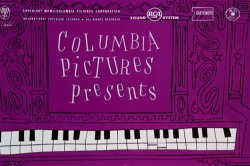 - As you know, I like this cartoon. Rooty Toot Toot. I think it’s one of the very best animated films ever made. The film combines brilliant design, with great animation, and an extraordinary story.
- As you know, I like this cartoon. Rooty Toot Toot. I think it’s one of the very best animated films ever made. The film combines brilliant design, with great animation, and an extraordinary story.
Kurosawa had directed Roshomon in 1950, and it had just touched down in the US. This tells of several people who meet up while waiting out a rain storm as they tell their differing versions of the killing of a samurai. It 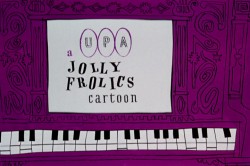 takes place in 12th Century Japan. There is no doubt that Hubley saw this film and does his cartoon adaptation of Frankie & Johnny using the same schema. It was not only daring for animation, but it was daring for film. It took the hands and eyes of a master to pull it off, and Hubley succeeded in the short 8 min cartoon.
takes place in 12th Century Japan. There is no doubt that Hubley saw this film and does his cartoon adaptation of Frankie & Johnny using the same schema. It was not only daring for animation, but it was daring for film. It took the hands and eyes of a master to pull it off, and Hubley succeeded in the short 8 min cartoon.
There is the legend that Steve Bosustow tried to get Hubley to speed up the
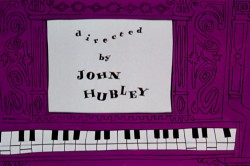 storyboard/writing process where finally the director had to lock himself and the board in to keep the production on hold until he thought it was finished. Eventually, according to the story, Bosustow broke down the door and put the film into its next phase. I don’t know what truth is in this, but I assume there must be a little something to it.
storyboard/writing process where finally the director had to lock himself and the board in to keep the production on hold until he thought it was finished. Eventually, according to the story, Bosustow broke down the door and put the film into its next phase. I don’t know what truth is in this, but I assume there must be a little something to it.
Unlike most other UPA films, this movie was made for an adult audience and it had no
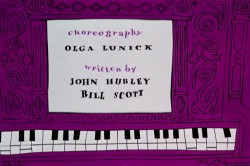 children to speak down to. Unlike most other UPA films, the art style came from 20th century art, not “illustration.” The inspiration was more Steinberg, Ben Shahn and WPA than Vanity Fair or the New Yorker.
children to speak down to. Unlike most other UPA films, the art style came from 20th century art, not “illustration.” The inspiration was more Steinberg, Ben Shahn and WPA than Vanity Fair or the New Yorker.
I’ve decided to pull frame grabs from the film, but that can only account for some still graphics. You really have to see this in motion, and I suggest you watch the version on the TCM Jolly Frolics DVD. It’s the only version that has a good transfer which does the design justice.
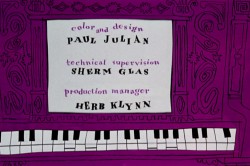
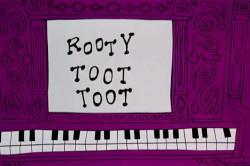
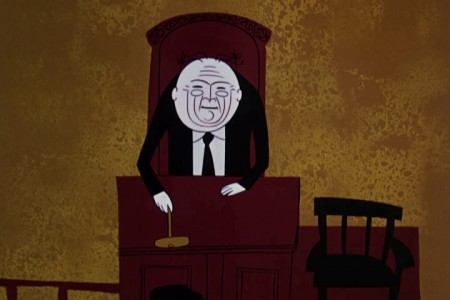 2
2
Gold colors dominate the opening of the trial,
except for Frankie’s bright red dress.

Frankie appears, to stand trial.
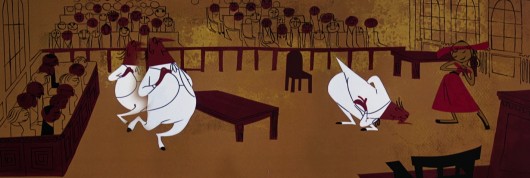
The defense does a dance with Frankie
as he caresses his client.
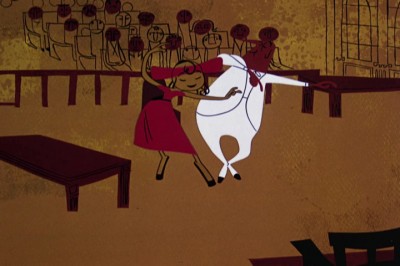 6
6
Choreographer Olga Lunick earned her money on this scene.
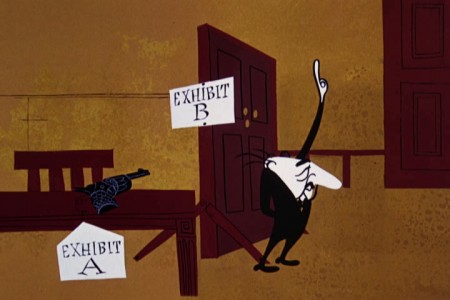 10
10
An open and shut kind of case.

The bartender is the first witness.
He waves hello to half those seated,
before raising his right hand to be sworn in.
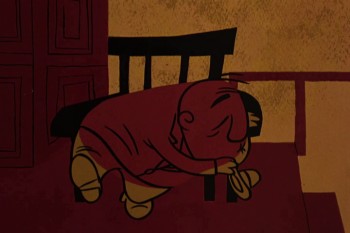 12
12
The bartender brings a subtle color change as
we move from gold hues to brownish colors.
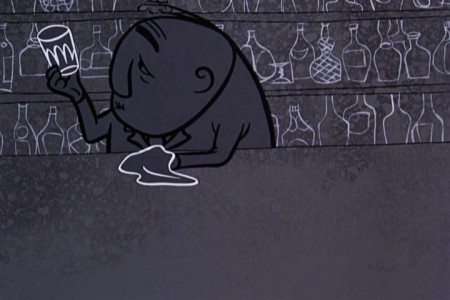 16
16
Once we go back to the bar, bluish grays take the scenes.
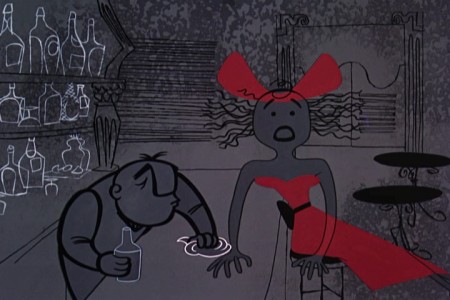 20
20
The bartender revealing Nellie Bly in the back room
foreshadows his reveal at the end of the film.
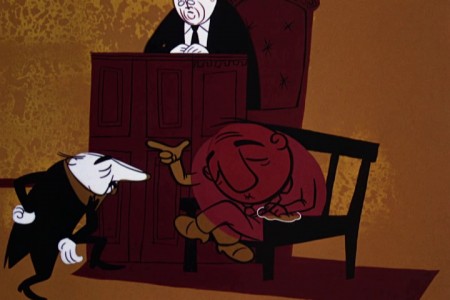 24
24
Back to the browns and ochres in the courtroom.
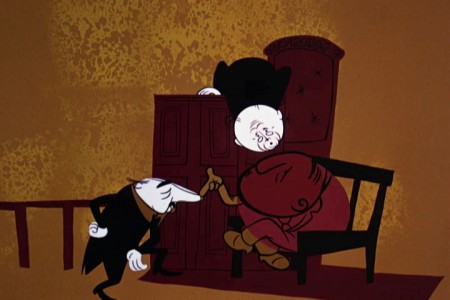 25
25
“Right in the snoot . . . ”
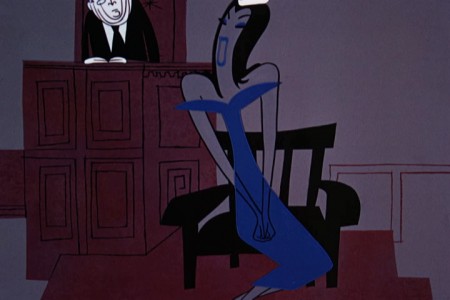 27
27
Nellie Bly brings her violets, lavenders and blues.
The exact opposite of Frankie’s colors.
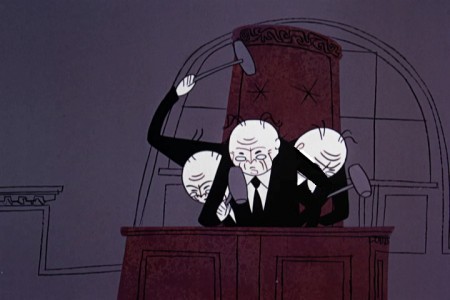 29
29
Order in the court.
The judge doesn’t smear; he breaks into multiple versions
of himself frenetically hammering his desk.
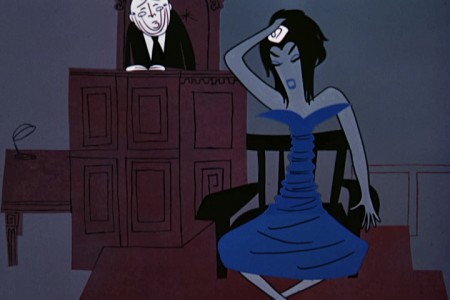 33
33
Straightening out the story . . .
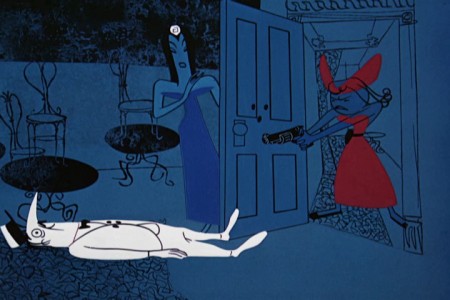 45
45
All blues except for that dress.
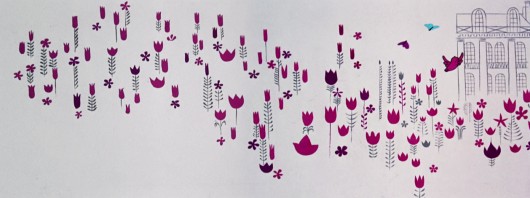
Frankie’s story comes in lily whites and white on white.
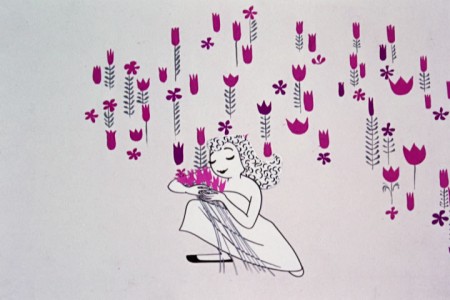 55
55
Her hair in this sequence was matted into the animation.
The decorative pattern didn’t move within the body of the hair.
A real pain in the butt for a design technique. Multiple camera runs.
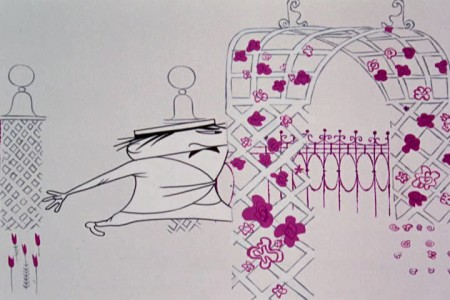 57
57
Smear frames are used in this sequnce for Johnny.
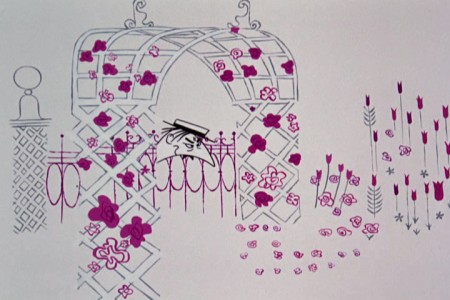 58
58
the victim is made to be the evil one.
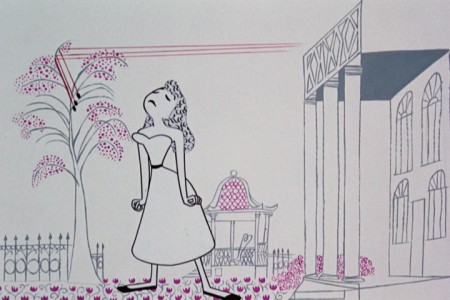 67
67
The bullets ricochet, musically, all over the place.
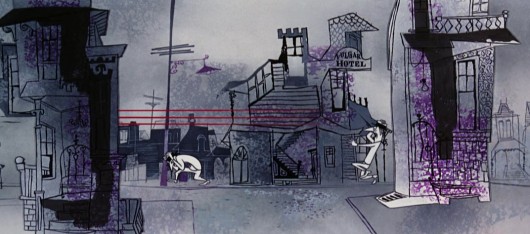
The pure whitish backgrounds turn to dirty grays.
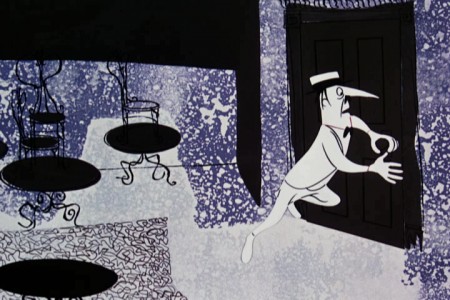 78
78
There’s a reuse of the gag as he looks out the door (see #40 on),
but the animation is different. No expense spared on this film.
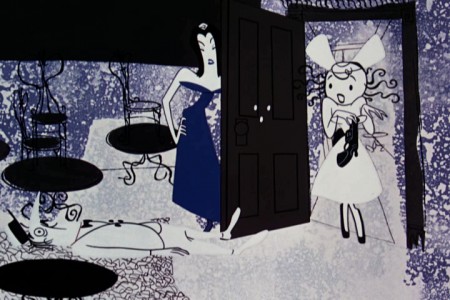 88
88
Back to the courtroom, vermillion is the color dominating.
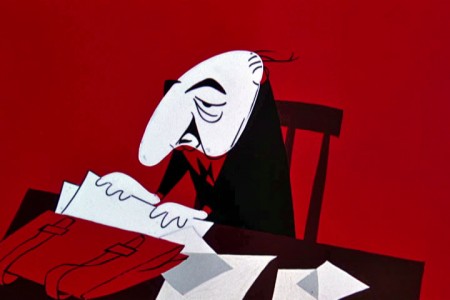 97
97
Back to the courtroom, vermillions turn to
deep reds as the innocent verdict is revealed.
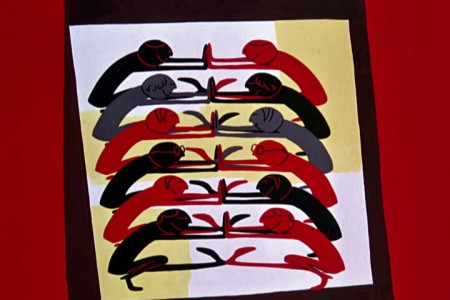 103
103
Very short quick scenes scream at the audience.
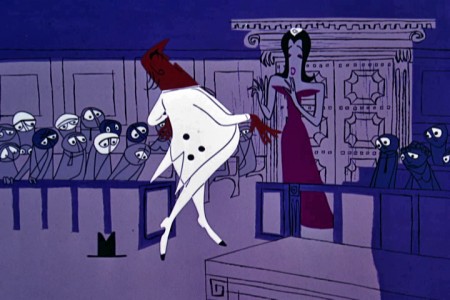 108
108
The attorney’s murder brings bright violets and lavenders.
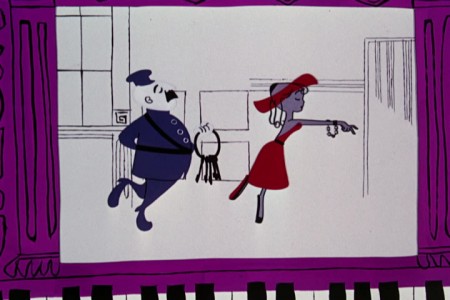 116
116
The lavenders dominate until we pull out
on the purple player piano.
This film, like Nordshtein’s Tale of Tales, is proof that animation can and should be as sophisticated as live action and as adult as any film. This is most certainly one of the classics in animation history. It’s only the animators and producers that hold the medium back.
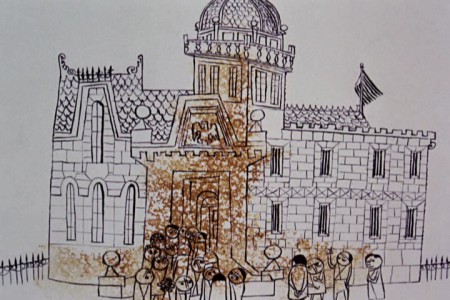
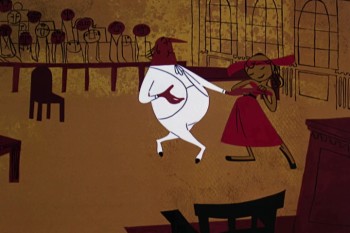
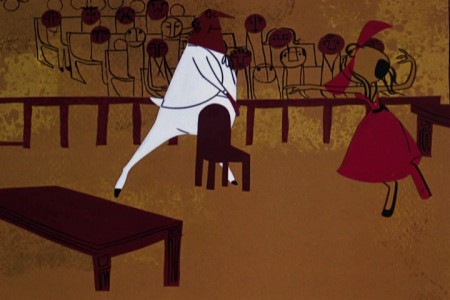
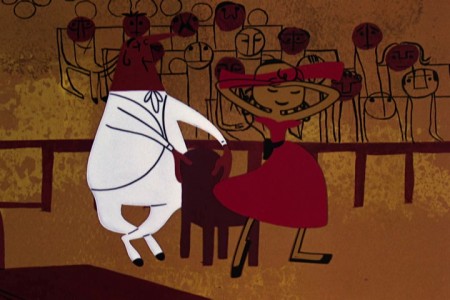
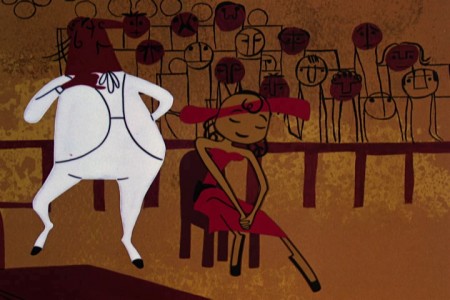
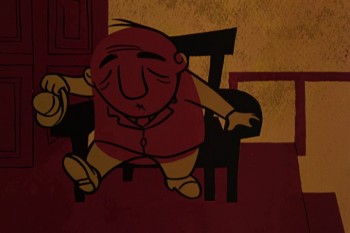
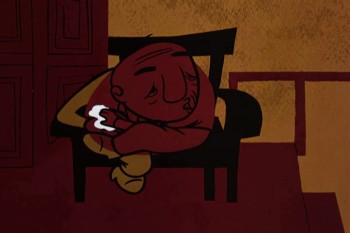
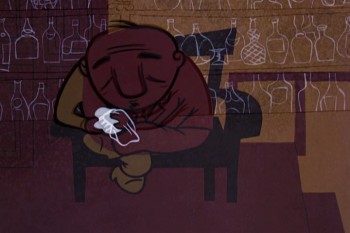

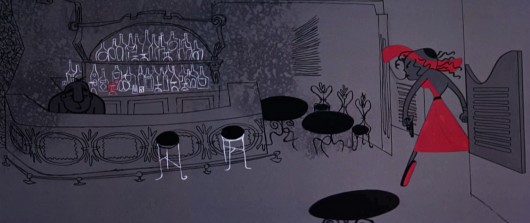
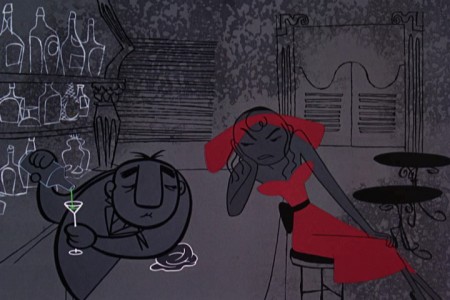
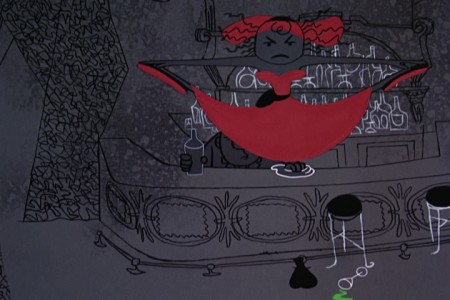
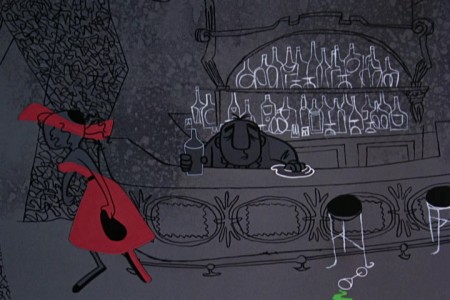
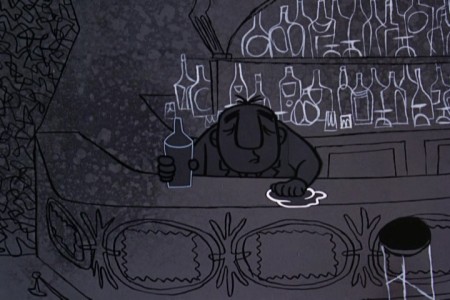
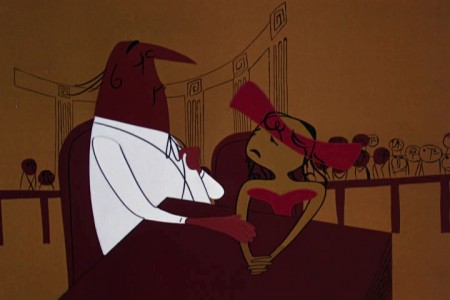
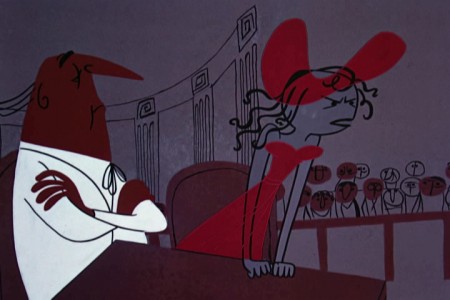
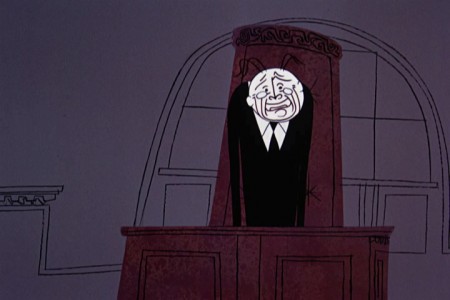
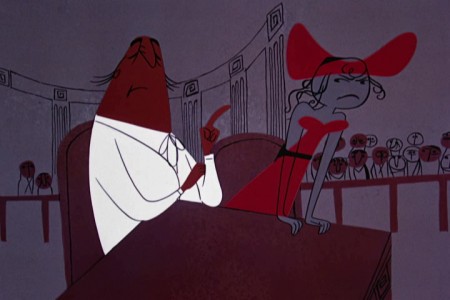
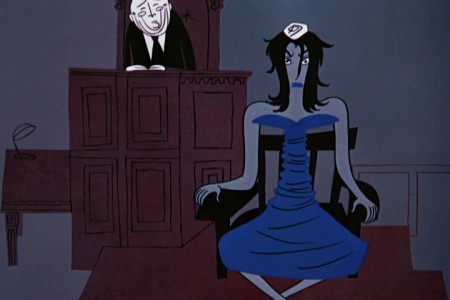
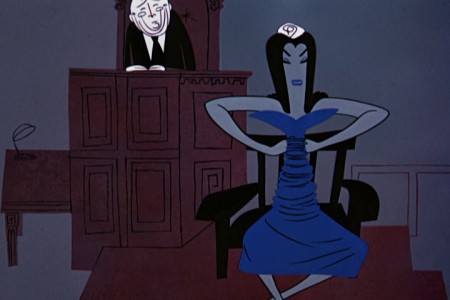
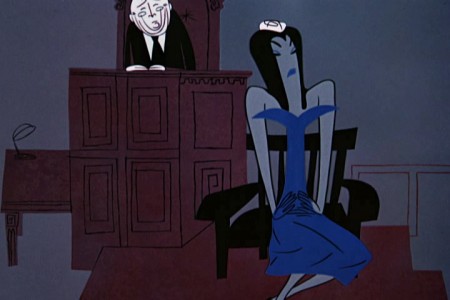
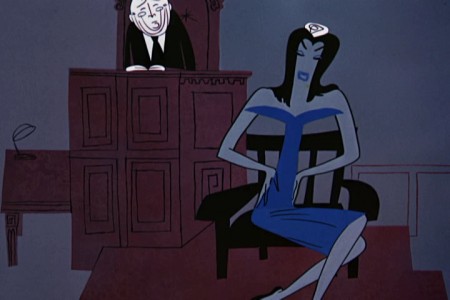

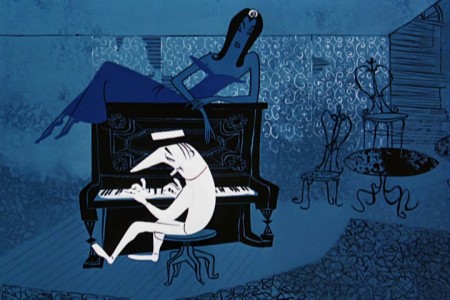
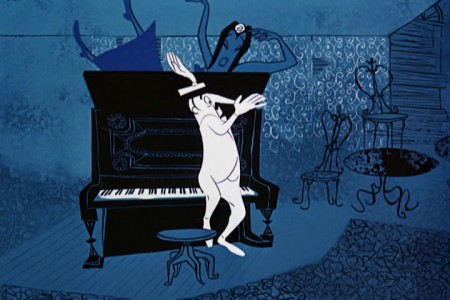
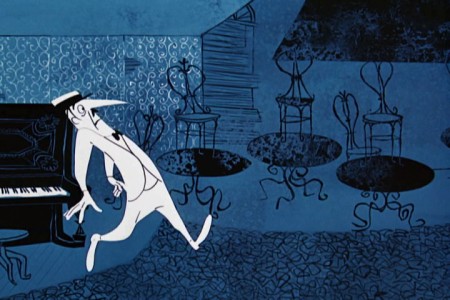
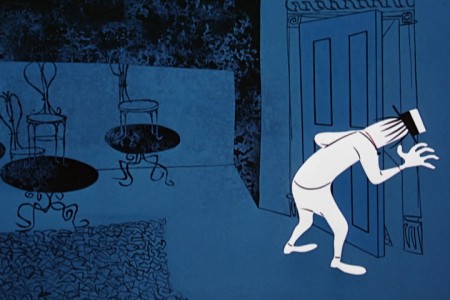
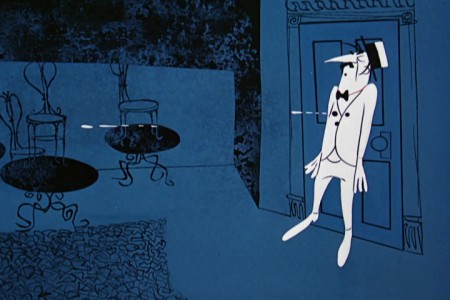
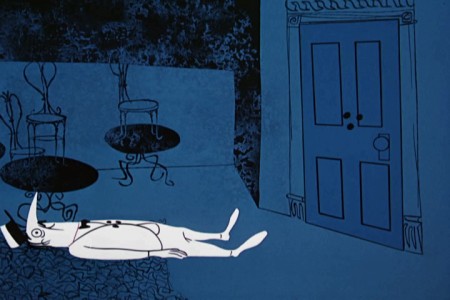
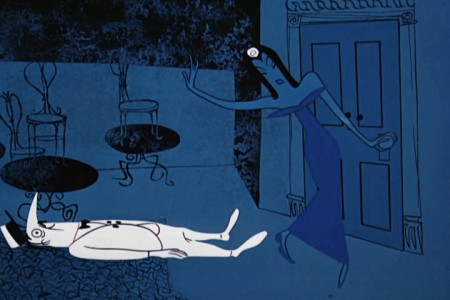
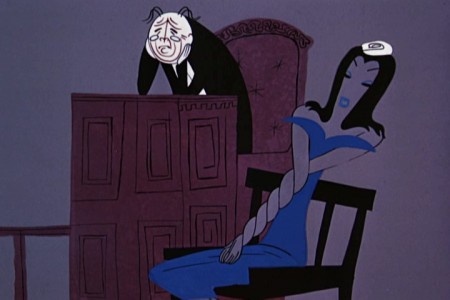
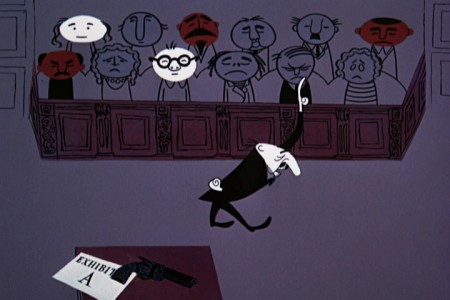
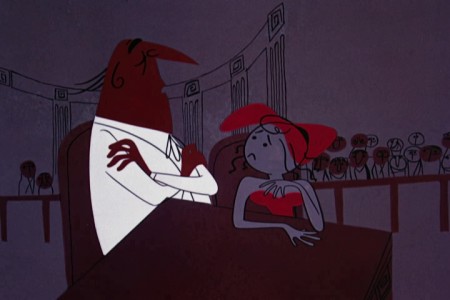
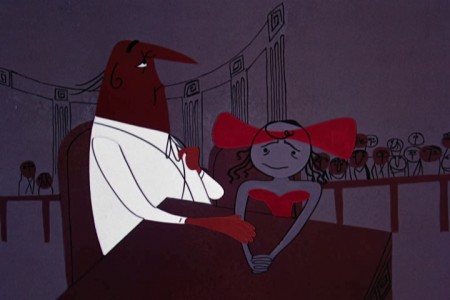
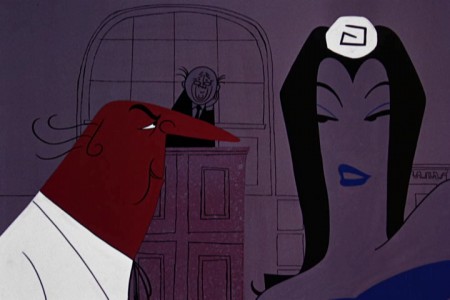
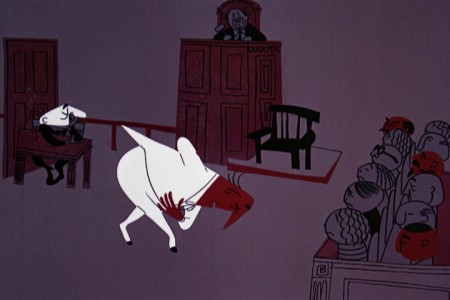
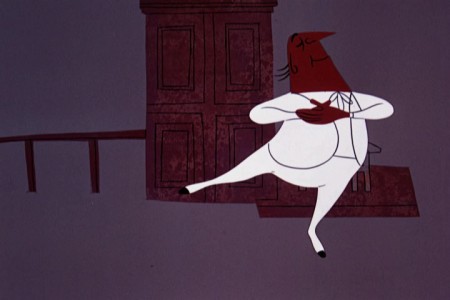
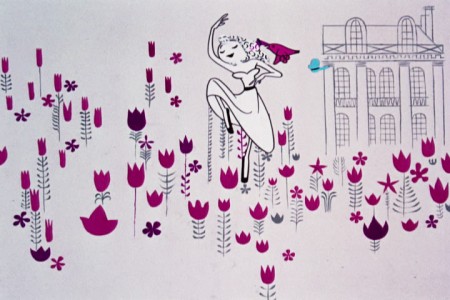
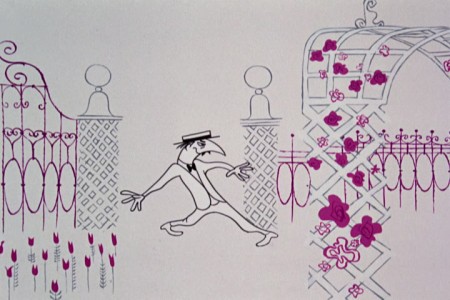
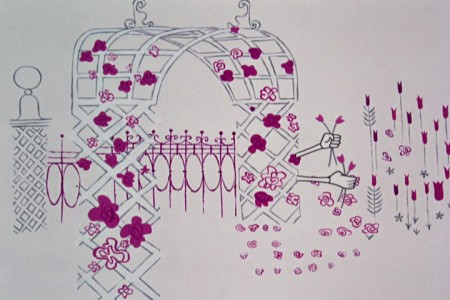
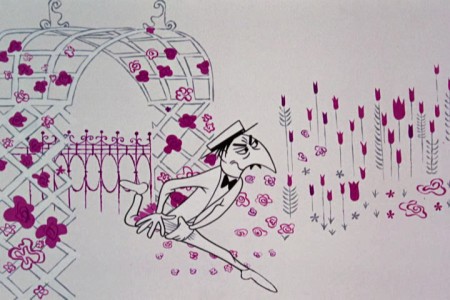
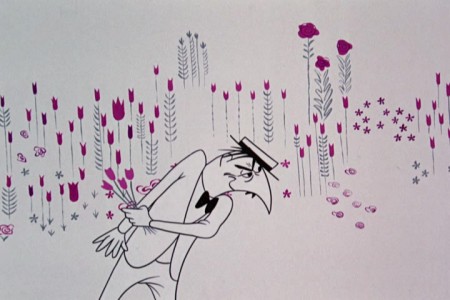
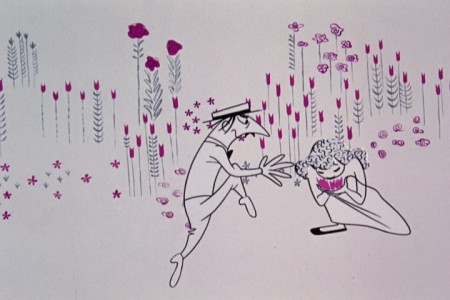
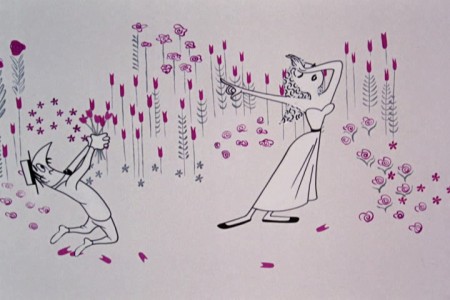
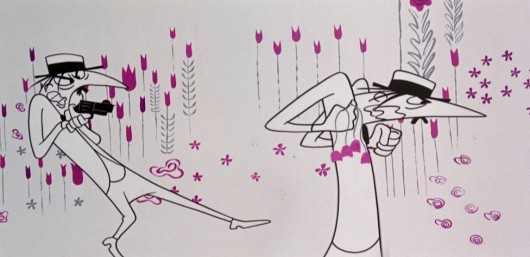
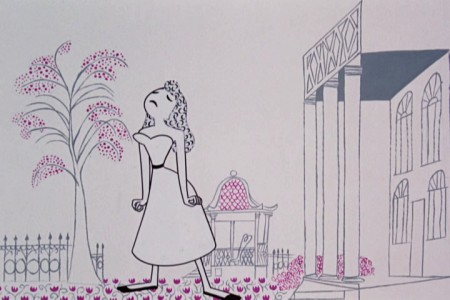
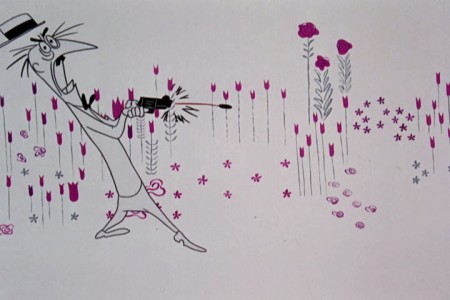
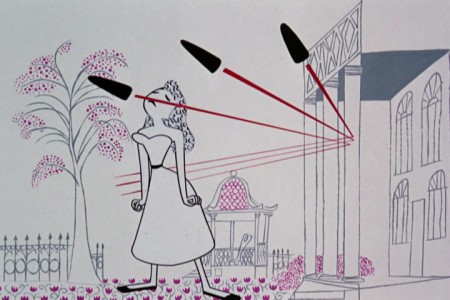
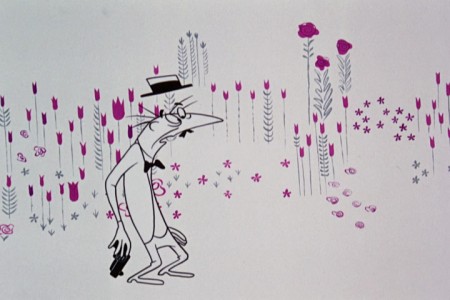
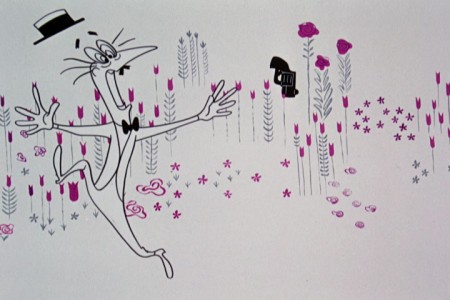
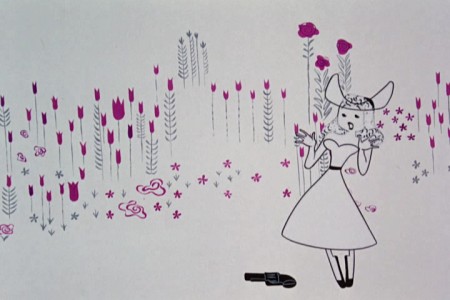
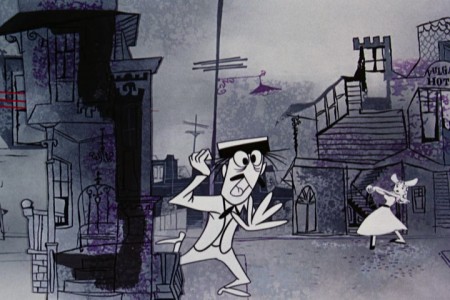
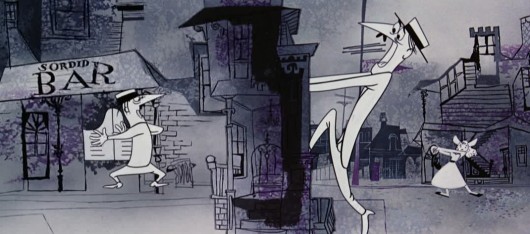
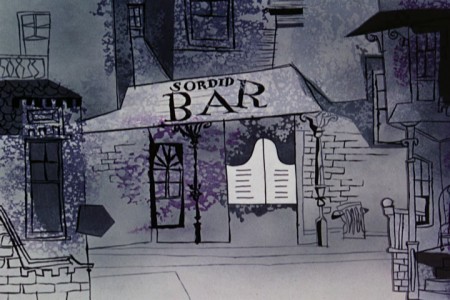
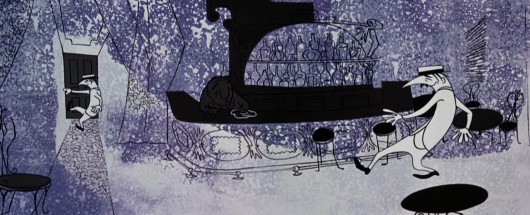

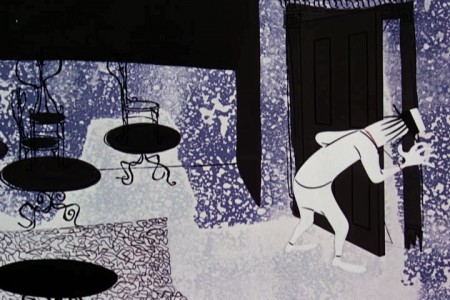
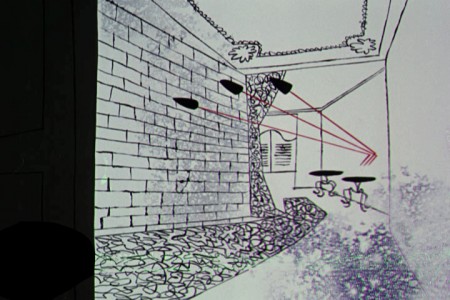
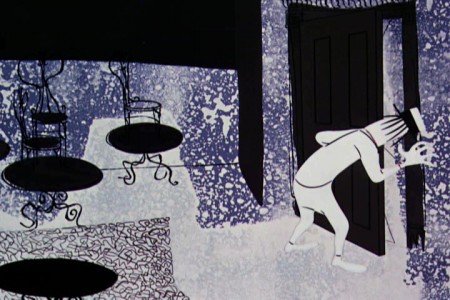
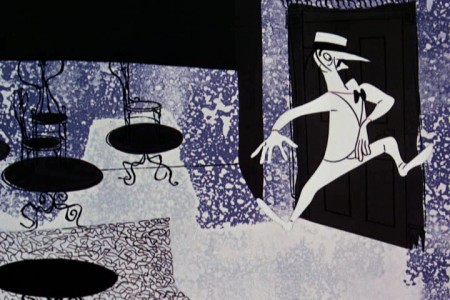
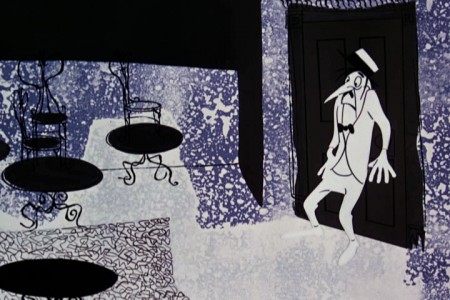
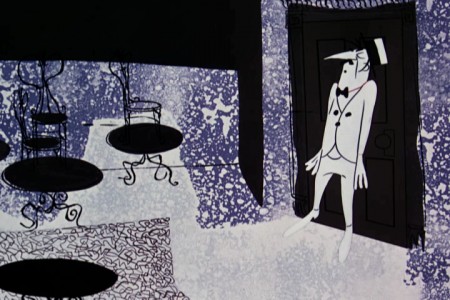
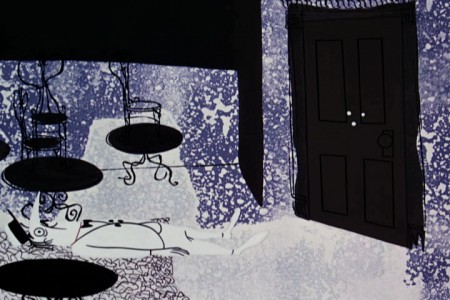
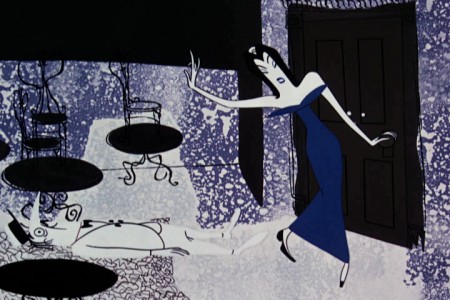
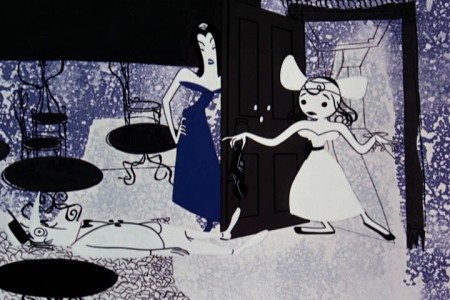
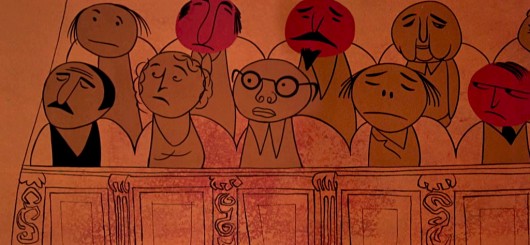
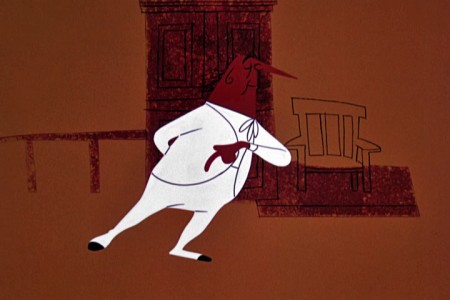
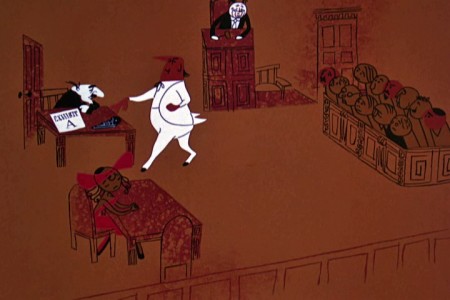
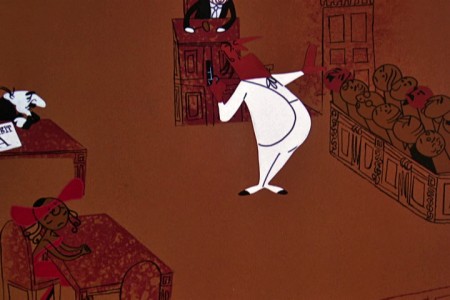
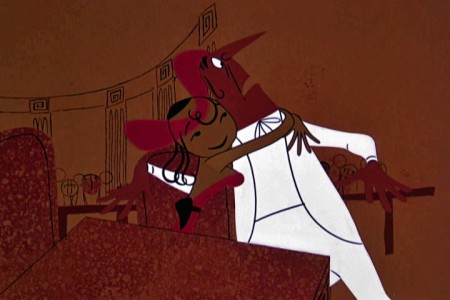
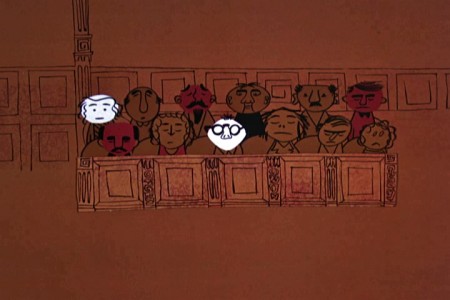
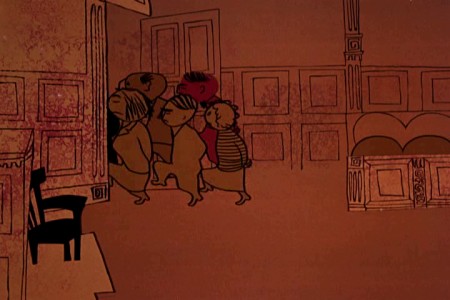
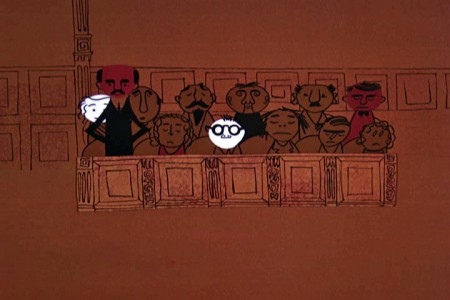
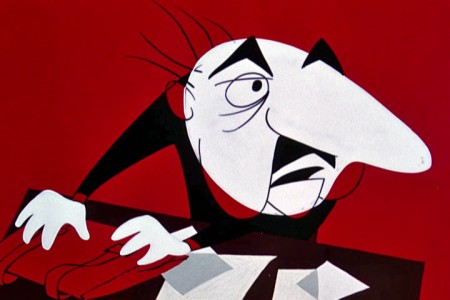
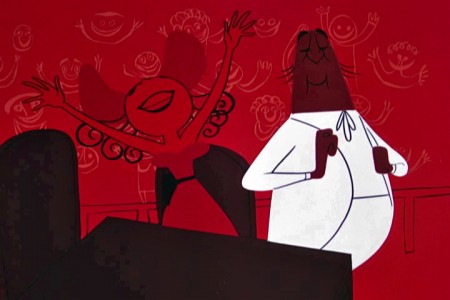
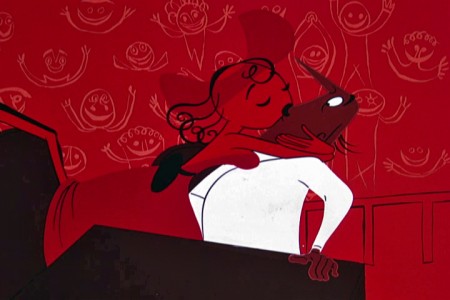
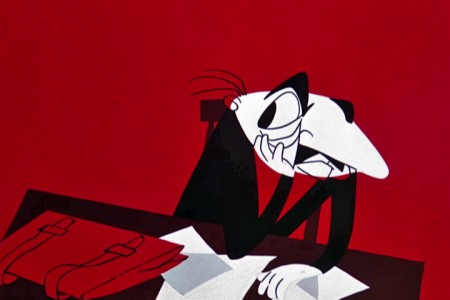
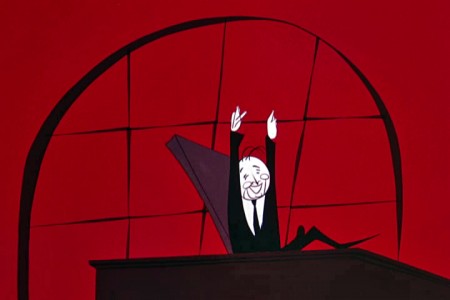
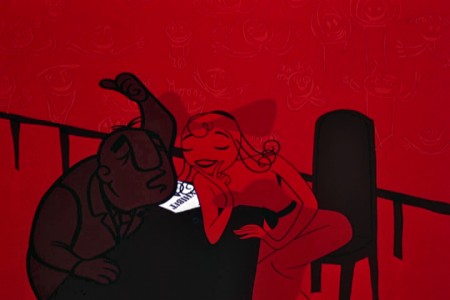
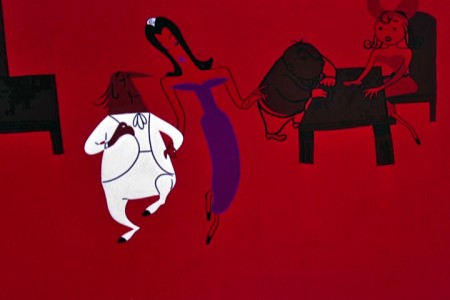
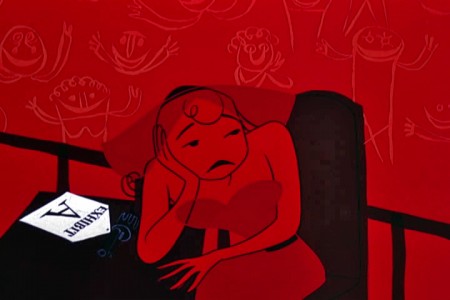
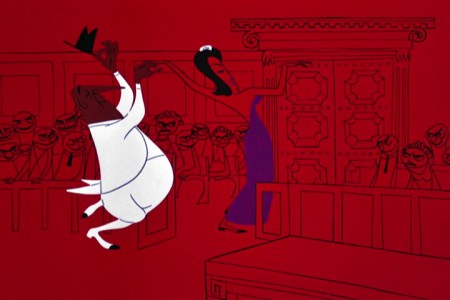
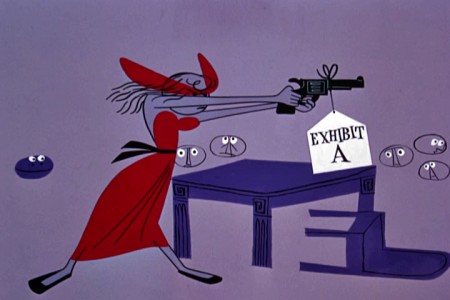
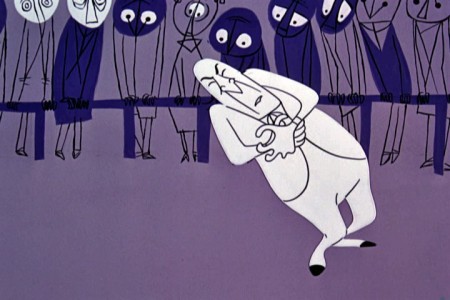
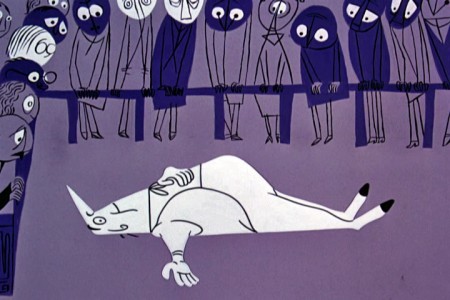
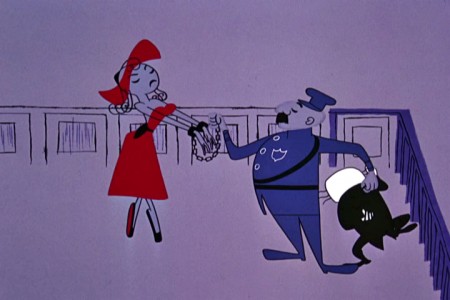
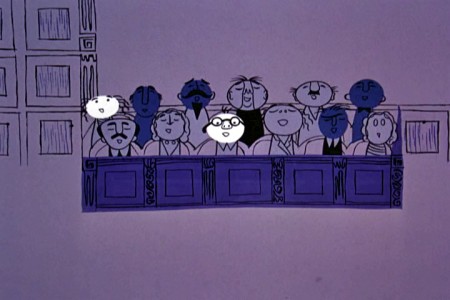
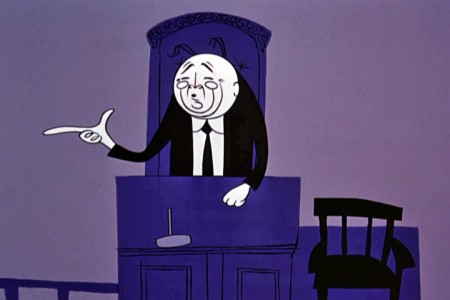
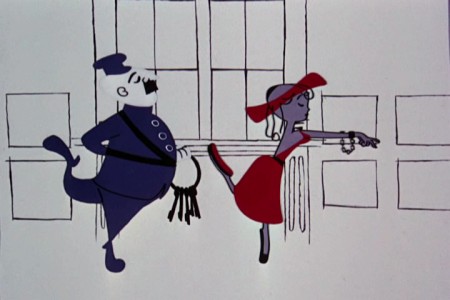
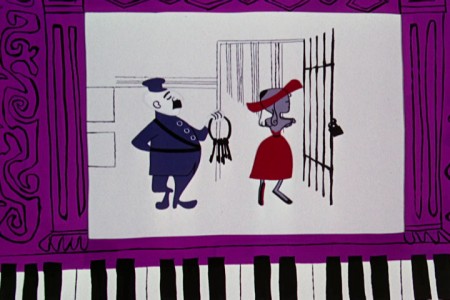
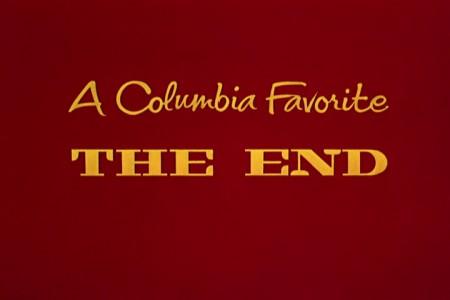

on 21 May 2012 at 5:45 am 1.Matt said …
The transition into the bar scene is really attractive. The colors are simply stunning.
I’m going to have to buy a copy now. Thanks for posting this.
on 21 May 2012 at 10:32 am 2.Thad said …
Yes, one of the true masterpieces of animation. Key to its success is that the revolutionary design does not overshadow the animation, with a sublime balletic approach to the movement, nor the profoundly witty story.
I wonder if animation history would have changed if this cartoon won the Oscar. Surely UPA, maybe even Columbia, would have put up more of a fight to keep an Oscar-winning director in their employ? Highly doubtful, but still interesting to ponder…
on 21 May 2012 at 12:19 pm 3.Michael Barrier said …
A lovely post. But if Rashomon rather than countless courtroom dramas were truly the inspiration for Rooty Toot Toot (did Hubley ever speak to that?), wouldn’t we have Johnny’s version, too? It seems to me that it’s that supernatural dimension, the victim speaking from beyond the grave, that makes Rashomon so strange and special. Rooty Toot Toot is very special, too, of course, but in a different way.
on 21 May 2012 at 9:20 pm 4.Michael said …
Ihe only aspect I’d seen taken from the Roshomon model was the use of multiple narrators. I can’t think of too many films that actually used that device. It may go back as far as the “Canterbury Tales” in literature, but film has been married to the single narrator’s voice. It’s unusual that Roshomon appeared just a year prior to Rooty Toot Toot. Of course, Rosomon is much more complex in its telling, but the device of the multiple narrators makes RTT seem more complex.
on 22 May 2012 at 12:37 am 5.The Gee said …
Some links:
http://www.tcj.com/freeway-to-upa/
I have yet to read that but it relates to this post.
As for the multiple narrators:
http://en.wikipedia.org/wiki/The_Three_Apples
http://en.wikipedia.org/wiki/As_I_Lay_Dying_(novel)
i think that was the first Faulkner novel I ever read. Helluva birthday present for a kid, ain’t it?
The link was provided as an example of how multiple narrators are unreliable narrators. I’ve actually used that technique before, for laughs. In part because it plays off of a trope I love.
Suffice it to say, it works perfectly in Rooty Toot Toot.
Rashomon still may be the key influence on Rooty Toot Toot’s narrative choice. It is probably a good influence to have, right?
And, I may be pointing out the obvious but quite often this technique, the trope, is used when a crime, a wrong or a death is involved in the story. Coincidence? Probably not.
on 22 May 2012 at 11:08 am 6.David Nethery said …
I love the animation and design in this film, but the weakest part of it to me is the implausibility of the gag of the bullets ricocheting all over the place and then “following” Johnny back to the Sordid Bar . That sort of gag works in the context of crazy cartoon logic in a Tex Avery film, but seems out of place here. We’re expected to believe that’s the best story the attorney could concoct for his version “what really happened” ?
on 22 May 2012 at 3:33 pm 7.Michael said …
I bought the cartoony-ness of this one sequence because it’s a lie. We know it’s a lie; everyone knows it’s a lie, and we’re shown nothing but lies. The virgin white sequence for the woman in the red dress; the down and dirty representation of Frankie as he smears all over the landscape (this is the only time any animation does that); and the ricocheting bullets are telegraphed by the obvious turn of the music.
on 22 May 2012 at 10:11 pm 8.Thad said …
I agree with Michael. The cartoon is so stylized, what difference does the outrageousness of Lawyer Jon’s story make? The cartooniness of the sequence works just fine. It’s a nice subtle commentary on the flaw of ‘justice’ in society too.
We differ on many points regarding UPA, Michael, but I think we both agree that RTT is surely among the greatest of all the animated cartoons of the 20th century. A friend told me he was watching the TCM set with someone who commented after RTT (having watched the first disc in chronological order), “There’s no reason to watch anything else, nothing could top that.” He was right, of course.
on 22 May 2012 at 11:42 pm 9.Tom Minton said …
A few frames were allegedly censored after Frankie yells “She’s no singer!” The original line was “She’s no singer! She’s a – ” and the ‘s’ of the second ‘She’s’ is still audible in the print on the DVD, just before the very abrupt cut to Nelly’s suddenly wrinkled dress. Whatever was in those frames surely provided a smoother emotional climax and also may have explained how Nelly Bly’s dress became so disheveled. Presumably no complete version could be unearthed or it would have made it onto the “Jolly Frolics” DVD set. This is a great cartoon but the butchery of the censor hurt it. Do European prints differ from those found in the USA?
on 23 May 2012 at 6:57 am 10.Michael said …
You start with the word “allegedly” and then take it as a matter of fact. There is an uncomfortable cut there; I agree. But calling it “butchery of the censor” when you’re not able to verify the information. I’m convinced that you’re right, something happened there, but the film – as it is – is still great.
on 23 May 2012 at 11:02 am 11.Tom Minton said …
I’m not in any way suggesting that UPA’s “Rooty Toot Toot” isn’t a great film. It’s absolutely among the best things that they ever did. My argument is that the picture did not need the tampering that took place in that awkward cut, which is so very awkward compared to everything else in the picture that it had to have been forced on the filmmakers after the film was complete. I just hope it wasn’t made to the original camera negative, though the chances of that being the case aren’t good, given Hollywood history.
As for my verification as to the line being cut, here it is, from page 95 of Adam Abraham’s recent “When Magoo Flew” book:
“…this film was one of the rare instances of censorship in American cartoons. When Nelly Bly professes to be a “singer,” Frankie blares, “That’s a lie! She’s no singer! She’s a – ” This last colloquialism – “she’s a” (sic) – was too suggestive for Columbia Pictures and had to be removed.”
The footnote at the end of that quote states that Adamson took it from Charles Solomon’s “Enchanted Drawings” book, page 216.
The animation historian Charles Solomon had to have gotten it from a reputable source. If he reads this blog, perhaps he should weigh in!
on 14 Jun 2012 at 8:14 pm 12.Chris Sobieniak said …
speaking of butchery and edits, I do sorta wonder what the original end title was this cartoon? I sorta picture it as “The End” or “A UPA Production” written out the doors of the player piano we see opening and closing this cartoon as it closes just as Frankie leaves the court room and the camera pulls back to reveal the piano framing device. These “Columbia Favorite” titles still bug me with their elusiveness.